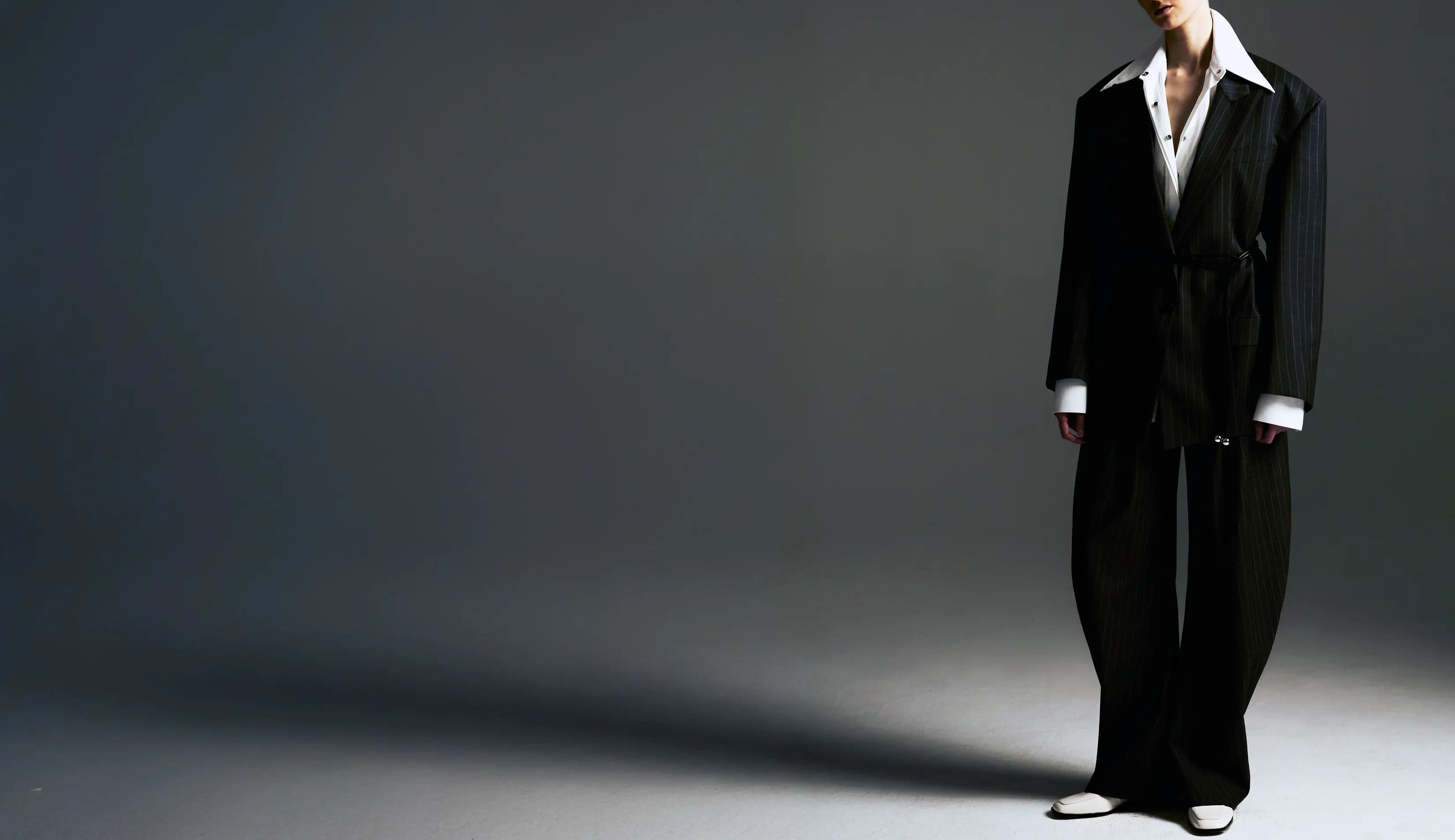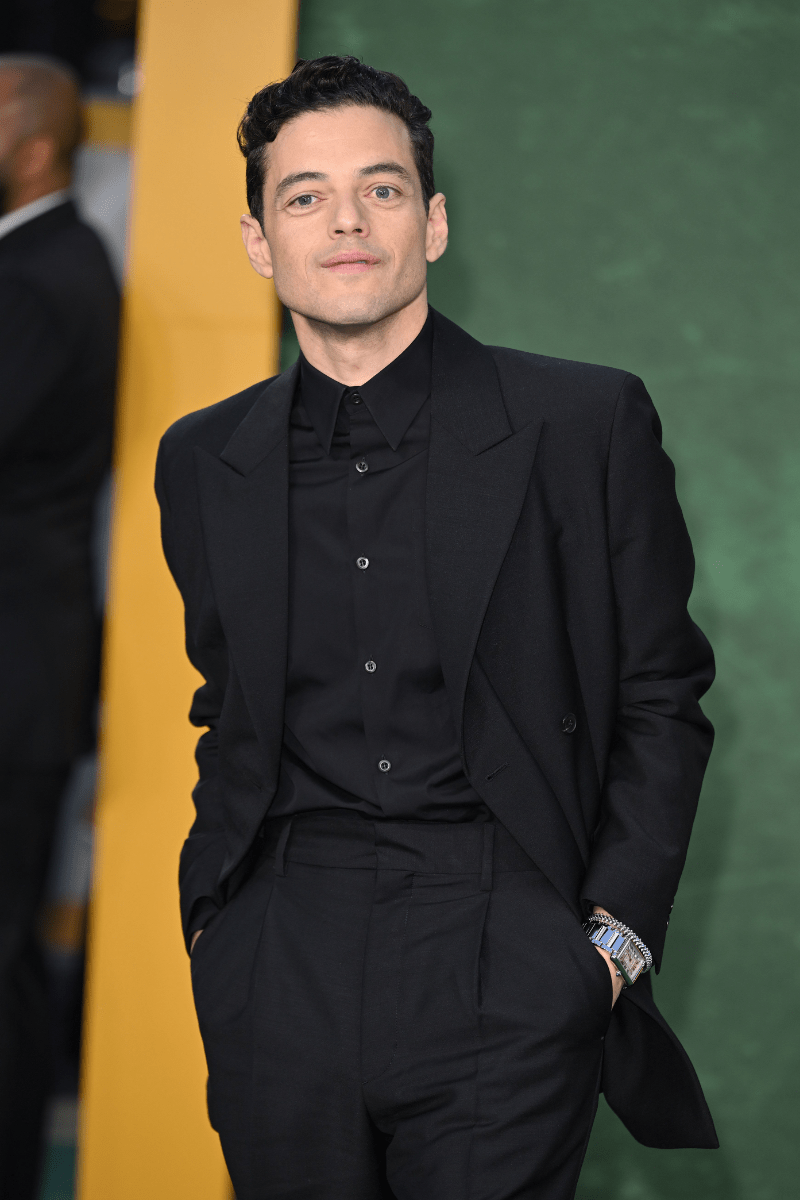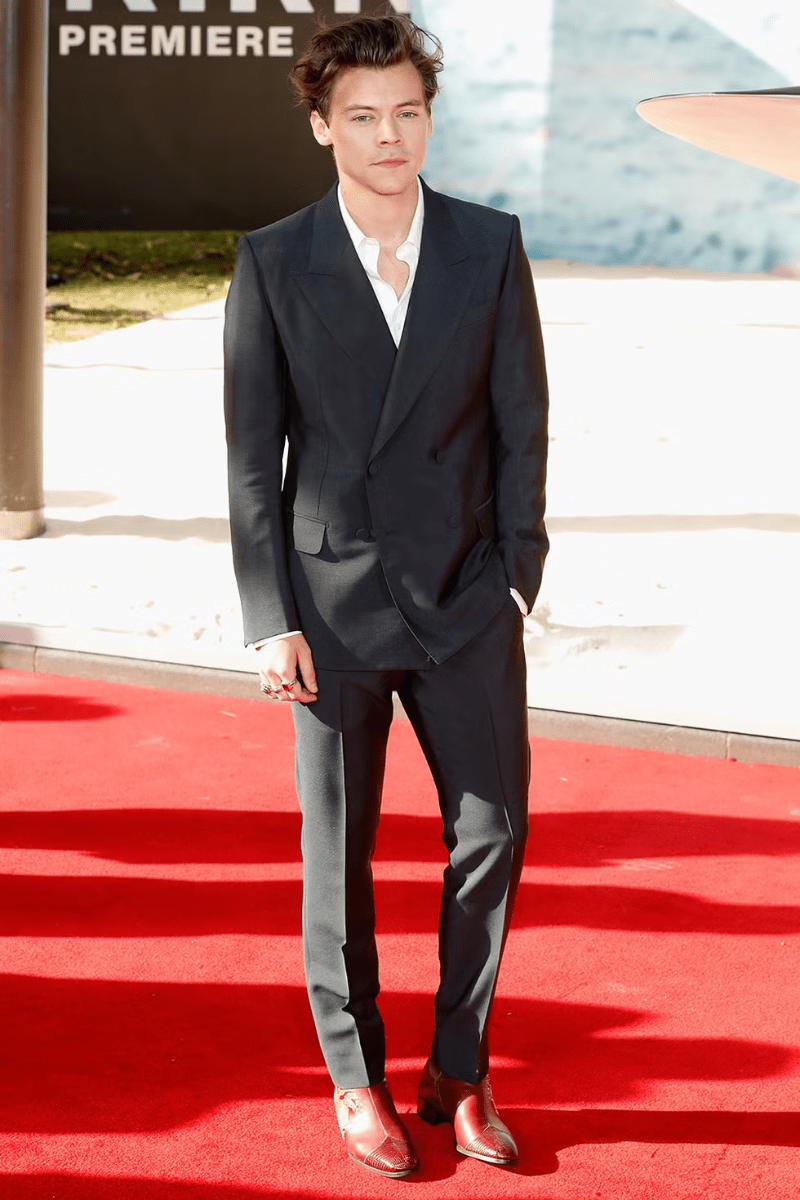Deconstructing Professional Presentation Assumptions
Traditional workplace fashion operates on assumptions that solidified during the Mad Men era and haven't undergone significant revision despite decades of cultural evolution. The notion that authority requires masculine mimicry, that creativity demands casual presentation, or that expertise correlates with specific aesthetic choices reflects industry thinking that predates contemporary professional realities. Smart professionals recognize these assumptions as constraints rather than requirements, opportunities for strategic differentiation rather than mandatory conformity.
Hand-canvassed floating chest pieces—the kind of structural precision that separates investment pieces from costume construction—provide foundation for workplace fashion that commands respect through quality rather than stereotype adherence. Princess seams create tailored silhouettes that accommodate diverse body types without forcing conformity to standardized fits. Armscye adjustments ensure comfort during long working hours while maintaining professional presentation that supports rather than undermines professional effectiveness.
The technical vocabulary matters because precision in construction translates directly to confidence in execution. When skilled tailors discuss canvassing techniques or seaming methods, they're describing invisible architecture that supports visible professional presence. Contemporary workplace fashion often requires combining construction techniques from different sartorial traditions—Italian shoulder construction for natural movement, British tailoring for durability, French finishing for luxury details.
Industry-specific dress codes often reflect historical biases rather than contemporary professional requirements. Legal profession conservatism might have served specific purposes in past decades but doesn't necessarily support current professional effectiveness. Creative industry casual presentation might have communicated authenticity when creativity was marginalized but could undermine authority in contemporary contexts where creative skills command executive compensation.
The most successful contemporary workplace fashion transcends these categorical limitations by understanding which elements serve functional purposes versus which exist as cultural artifact. Professional presentation that serves individual effectiveness while maintaining industry appropriateness requires strategic thinking that goes past surface-level compliance into deeper understanding of professional psychology and cultural dynamics.
Strategic Identity Navigation Through Construction
Contemporary workplace fashion increasingly addresses identity navigation that extends past traditional gender, age, and cultural categories. Non-binary professionals might seek silhouettes that exist between conventional menswear and womenswear categories. Transgender individuals often require construction techniques that support their authentic presentation while maintaining professional appropriateness. Multicultural professionals might integrate elements from different cultural traditions while respecting workplace expectations.
The technical challenges mirror identity complexity. Creating professional silhouettes for diverse body types requires understanding how different construction techniques affect both appearance and comfort. Suppression methods must balance tailored presentation with practical functionality. Fabric selection influences both aesthetic impact and wearing comfort during extended professional activities.
Age-related workplace fashion navigation requires understanding how professional presentation expectations evolve across career stages. Younger professionals might need clothing that communicates competence without appearing to try too hard, while experienced professionals could benefit from updated silhouettes that reflect contemporary aesthetics without sacrificing earned authority. The construction techniques remain constant, but their application requires strategic adaptation.
Cultural background influences workplace fashion success through understanding how different aesthetic languages communicate within professional contexts. European tailoring traditions might convey sophistication in certain industries, while American casual aesthetics could signal approachability in others. Asian minimalism might communicate efficiency and precision, while African textile traditions could suggest creativity and cultural awareness.
Contemporary workplace fashion increasingly addresses accessibility requirements that traditional professional wear often ignores. Wheelchair users might need modified proportions or specialized construction details. Sensory processing differences could influence fabric selection and seaming techniques. Visual impairments might affect color choices and tactile elements that enhance professional confidence.
Economic Strategy in Professional Wardrobe Development
Workplace fashion investment requires strategic thinking that extends past immediate purchase decisions into long-term career development and wardrobe evolution. The mathematics become compelling when considering the relationship between professional presentation and advancement opportunities. Quality construction often correlates with increased professional recognition and networking effectiveness that justifies investment in superior tailoring.
Traditional professional wear assumes standardized career trajectories and stable industry expectations. Contemporary workplace fashion must accommodate career mobility across industries, geographic regions, and cultural contexts. Versatile construction allows pieces to serve multiple professional functions while maintaining consistent quality presentation. Investment in adaptable foundation garments supports professional effectiveness across changing circumstances.
The cost-benefit analysis for workplace fashion often reveals hidden expenses associated with inappropriate professional presentation. Poor fit or inferior construction can undermine professional credibility in ways that affect career advancement. Frequent replacement of lower-quality garments often exceeds the cost of initial investment in superior construction. Strategic wardrobe planning prevents these compromise costs while ensuring consistent professional presentation.
Contemporary professionals approach wardrobe investment with the same analytical thinking they apply to other career development expenditures. Professional education, technology upgrades, and networking investments all require strategic evaluation. Quality workplace fashion often provides better return on investment than alternatives because superior construction maintains professional presentation through intensive use rather than requiring careful preservation.
Sustainable workplace fashion aligns with contemporary professional values while providing economic advantages through longevity and versatility. Quality construction reduces replacement frequency and alteration requirements. Timeless silhouettes maintain relevance through changing trends. Superior materials age gracefully rather than showing wear as damage.
Technology Integration in Professional Presentation
Modern workplace fashion benefits from technological innovations that enhance functionality without compromising professional aesthetics. Performance fabrics provide practical advantages during high-stress professional situations—moisture management during presentations, wrinkle resistance through travel, temperature regulation during varying office environments. These functional enhancements support professional effectiveness while maintaining sophisticated appearance.
Digital communication increasingly influences professional presentation requirements. Video conferencing demands different considerations than in-person meetings—certain colors photograph better, specific patterns avoid visual interference, particular silhouettes frame more effectively on screen. Contemporary workplace fashion often incorporates these technical requirements into design decisions without sacrificing in-person presentation quality.
Wearable technology integration creates new possibilities for professional fashion that supports career effectiveness. Smart fabrics might provide biometric monitoring during high-stress situations. Integrated charging capabilities could support mobile device requirements. Temperature regulation technology might enhance comfort during extended professional activities.
Contemporary workplace fashion increasingly addresses global professional mobility through technology integration. Time zone adaptation affects comfort priorities during international business travel. Climate adaptation requires versatile pieces that function across varying environmental conditions. Cultural sensitivity considerations influence color and silhouette choices for international professional contexts.
The technological capabilities also support sustainability considerations that align with contemporary professional values. Digital pattern-making reduces production waste while enabling greater customization precision. On-demand manufacturing eliminates overproduction while supporting local economies. Material innovation provides eco-friendly alternatives that maintain professional presentation standards.
Seasonal Professional Wardrobe Strategy
Professional fashion requirements vary significantly across seasonal contexts that affect both comfort and presentation effectiveness. Traditional workplace fashion often ignores these variations, assuming consistent indoor climate control and standardized professional activities. Contemporary workplace fashion must accommodate seasonal professional requirements while maintaining consistent presentation quality.
Spring professional fashion often embraces lighter fabrics and renewed color palettes that reflect seasonal optimism while maintaining professional appropriateness. The construction techniques remain precise, but material selection adapts to changing climate conditions. Seasonal professional events might require different formality levels or cultural considerations that influence wardrobe planning.
Summer workplace fashion challenges traditional professional presentation assumptions through climate requirements that affect both comfort and appearance. Lightweight fabrics must maintain professional structure while providing breathability. Color choices might need adjustment for intense sunlight conditions. Professional activities could shift to outdoor venues that require different presentation strategies.
Fall professional fashion provides opportunities for richer textures and deeper color palettes that complement seasonal aesthetics while supporting professional effectiveness. The transition between seasons requires versatile pieces that function across changing conditions. Professional networking events might increase, requiring wardrobe adaptability across different contexts.
Winter workplace fashion emphasizes warmth and comfort while maintaining professional presentation standards. Heavier fabrics provide necessary insulation while supporting professional silhouettes. Professional activities might concentrate indoors, requiring different presentation strategies than outdoor-focused seasons. Holiday professional events create additional wardrobe requirements that blend professional and social considerations.
Geographic and Cultural Professional Adaptation
Contemporary professionals increasingly work across geographic regions and cultural contexts that require sophisticated wardrobe adaptation strategies. Traditional workplace fashion assumes consistent cultural expectations and standardized professional norms. Global professional mobility demands wardrobe solutions that maintain effectiveness across diverse cultural contexts while honoring local professional expectations.
Urban professional environments often provide sophisticated cultural backdrops that support experimental professional fashion while maintaining industry appropriateness. Metropolitan areas typically embrace diversity in professional presentation while maintaining quality standards. Network effects in urban professional environments can amplify the impact of strategic wardrobe choices.
International business contexts require understanding how professional presentation communicates across different cultural frameworks. Color symbolism varies significantly across cultures, affecting professional perception and effectiveness. Silhouette preferences might reflect cultural aesthetic traditions that influence professional appropriateness. Modesty requirements could affect construction details and styling approaches.
Regional professional preferences often reflect climate, cultural heritage, and local industry characteristics that influence appropriate professional presentation. Coastal regions might embrace more relaxed professional aesthetics while maintaining quality standards. Conservative regions could require more traditional professional presentation approaches. Industry concentrations affect professional presentation expectations within specific geographic areas.
Contemporary workplace fashion increasingly addresses cultural sensitivity requirements that support professional effectiveness across diverse contexts. Understanding cultural appropriation concerns helps avoid professional presentation choices that might undermine credibility. Collaborative approaches with cultural advisors ensure appropriate integration of diverse aesthetic elements.
Future Evolution in Professional Presentation
Workplace fashion continues evolving as professional contexts change and cultural expectations shift toward greater inclusivity and individual expression. Traditional industry assumptions about appropriate professional presentation slowly adapt to serve contemporary professional realities. The most successful contemporary workplace fashion anticipates these changes while maintaining construction quality that supports professional effectiveness.
Generational changes in professional presentation expectations reflect broader cultural shifts toward authenticity and individual expression within professional contexts. Younger professionals often prioritize personal authenticity alongside professional effectiveness, requiring wardrobe solutions that honor both priorities. Older professionals might need guidance on updating traditional professional presentation approaches while maintaining earned authority.
Industry evolution affects workplace fashion through changing professional requirements and cultural expectations. Technology industry professional presentation continues evolving toward more casual aesthetics while maintaining competence communication. Traditional industries slowly adapt to contemporary professional realities while preserving essential professional standards.
Sustainability considerations increasingly influence professional wardrobe decisions as environmental consciousness becomes professional priority. Quality construction supports sustainable consumption through longevity and versatility. Local production networks reduce environmental impact while supporting regional economies. Ethical manufacturing practices align with contemporary professional values.
The future of workplace fashion lies in continued evolution toward individual authenticity within professional effectiveness frameworks. Professionals who understand this balance recognize that true career advancement requires both technical competence and strategic presentation. Quality construction provides the foundation for professional success regardless of changing cultural expectations or industry evolution.
Contemporary workplace fashion reflects broader cultural movement toward authenticity, sustainability, and individual expression that extends past professional presentation into general lifestyle choices. Professionals crafting authentic workplace fashion often apply similar strategic thinking to career development, relationship building, and personal growth—prioritizing meaningful choices over conventional expectations.
Workplace fashion succeeds when it reflects genuine professional competence while maintaining construction quality that commands respect through technical excellence rather than stereotype adherence. The most memorable professional presentations demonstrate that authenticity and effectiveness aren't competing priorities—they're complementary elements that create professional presence as unique as the expertise they represent.
The industry continues adapting to serve professionals who understand that career advancement requires strategic presentation balanced with authentic self-expression. Quality construction provides the technical foundation for professional success while individual style choices create the differentiation that supports career advancement in competitive professional environments.
Professional presentation that transcends stereotypes while maintaining effectiveness requires both cultural intelligence and technical precision. The clothes that support professional success should reflect individual expertise while honoring industry expectations—constructed to support career advancement while expressing authentic professional identity.




